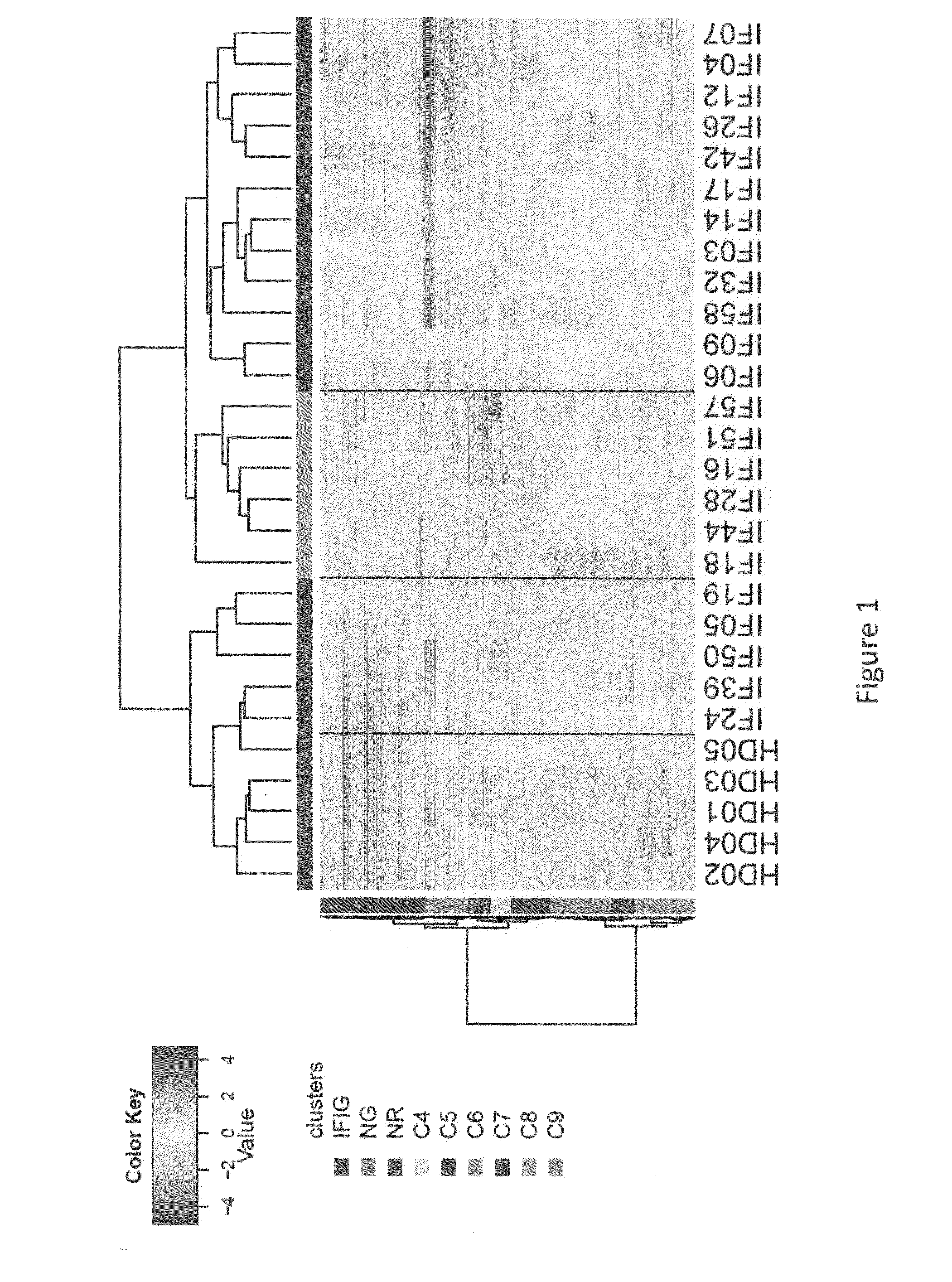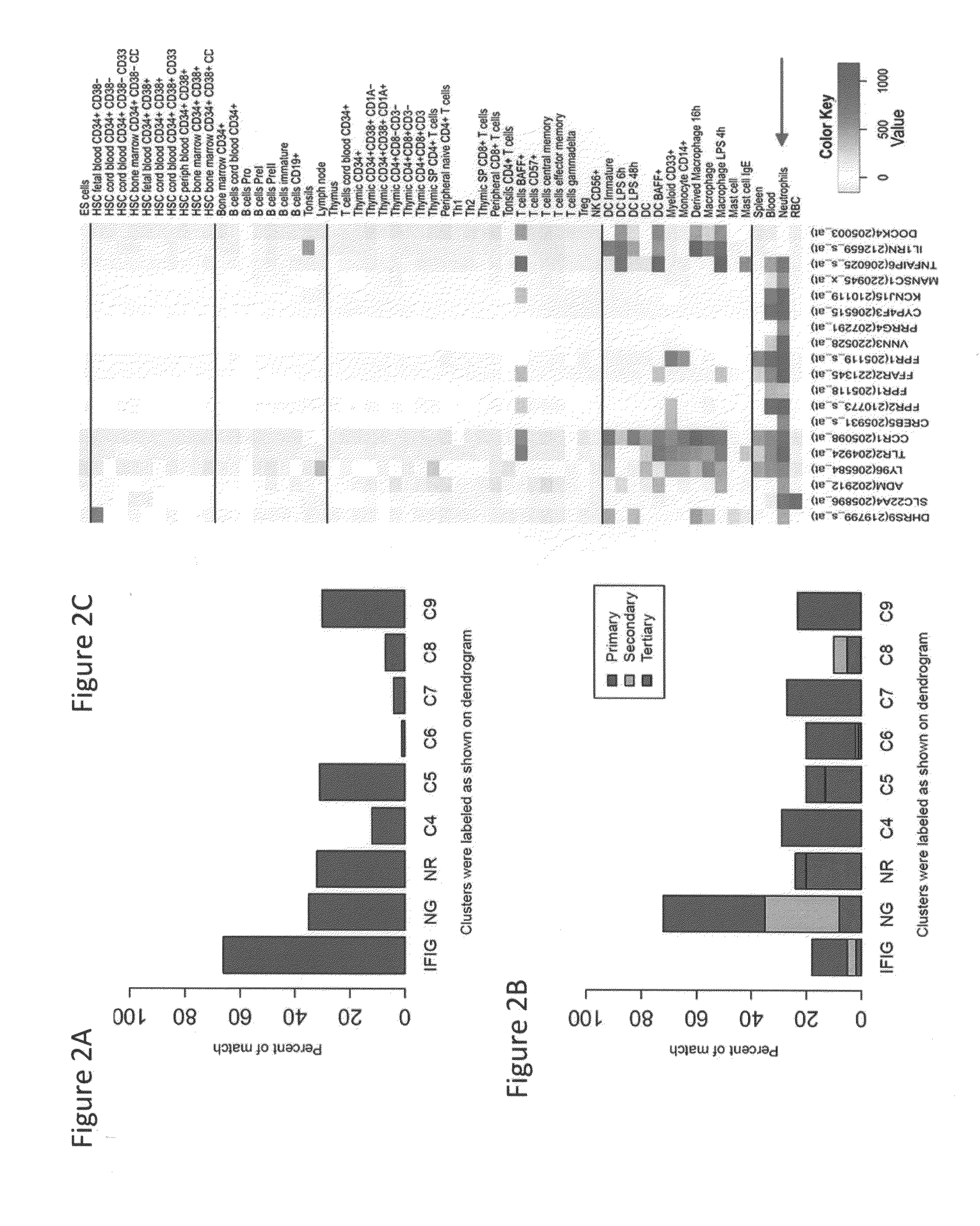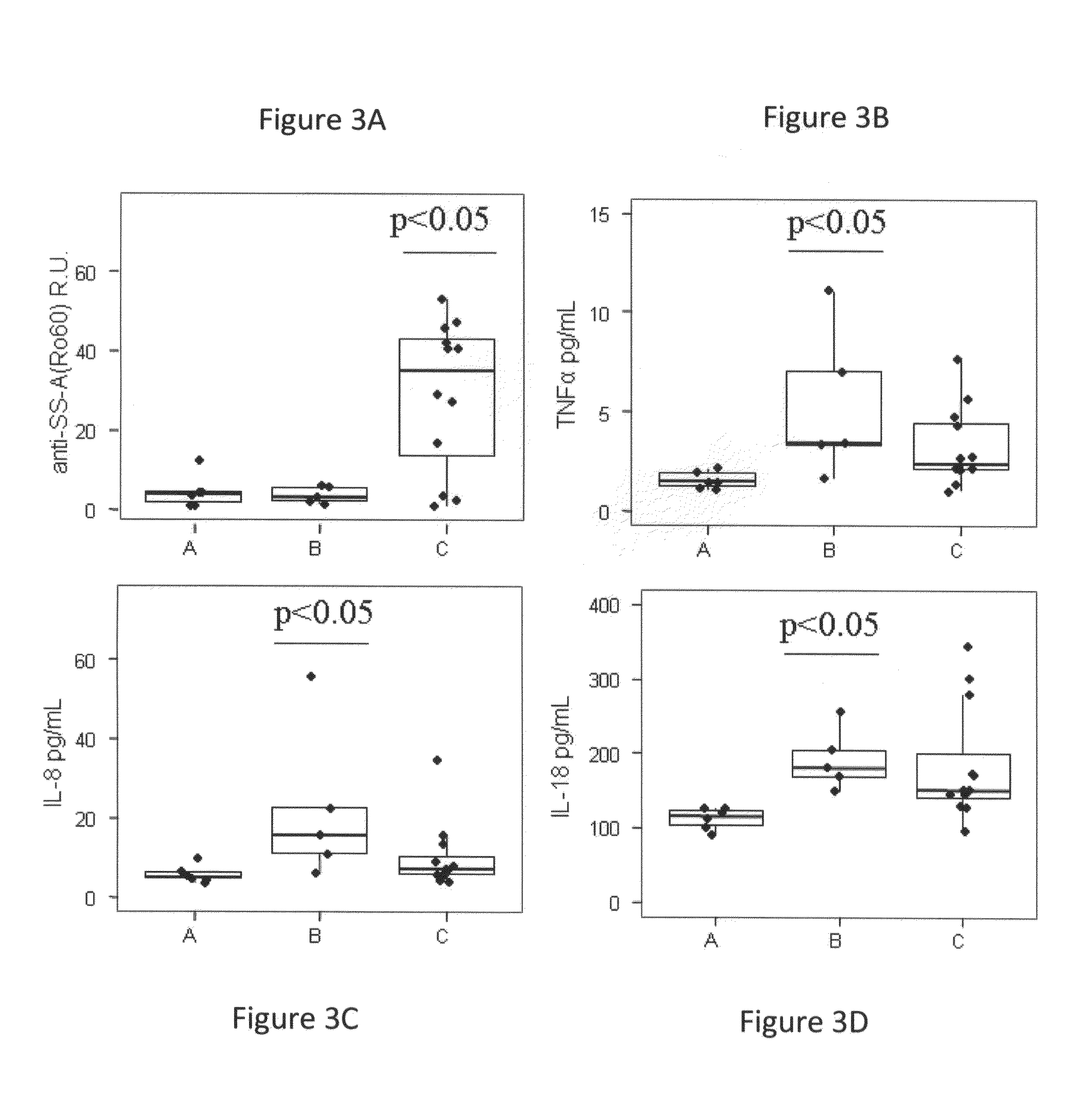Biomarkers for disease activity and clinical manifestations systemic lupus erythematosus
a biomarker and disease activity technology, applied in the field of systemic lupus erythematosus biomarkers, can solve the problems of no definitive diagnosis test for sle, no routine genetic testing in order, and the risk of lupus contracting kidney diseas
- Summary
- Abstract
- Description
- Claims
- Application Information
AI Technical Summary
Benefits of technology
Problems solved by technology
Method used
Image
Examples
example 1
Patients and Methods
Study Subjects
[0284]All patients fulfilled at least four of the American College of Rheumatology (ACR) criteria for SLE (Tan et al. 1982). Two cohorts of SLE patients were studied: a training set of 23 SLE patients, and a validation set of 58 SLE patients. Demographic and clinical data of the study patients are summarized in Table 7.
[0285]Episodes of mild / moderate and severe flare were established based on the Safety of Estrogens in Lupus Erythematosus: National Assessment—SLE Disease Activity Index [SELENA-SLEDAI (SLEDAI)] score (American College of Rheumatology Ad Hoc Committee on Systemic Lupus Erythematosus Response Criteria 2004). Mild or moderate flares were defined as an increase in SLEDAI score of more than 3 points from the previous visit. Severe flare was defined as change in SLEDAI to greater than 12. New organ flares or requirement for medical intervention were also considered flares. Longitudinal clinical data, along with PBMC and plasma samples, wer...
example 2
PBMC mRNA Transcripts Differentially Expressed Between SLE Patients and HDs Define Three Patient Groups
[0300]Based on the statistical method described in Example 1, 433 differentially expressed probe-sets between HDs and SLE patients were identified (fold change (FC)>1.5, p<0.05, 5% false detection rate (FDR)), along with 9 transcripts due to the effect of flare status. See Table 9.
[0301]As SLE patients are known to exhibit activation of type 1 interferon genes in the PBMC, the present of interferon inducible genes (“IFIG”) using the INTERFEROME database (Samarajiwa et al. 2009) was tested. The transcripts most highly expressed in SLE compared to HD samples were dominated by IFN-1-induced genes (IFIG) and neutrophil granule genes, consistent with previous reports. Approximately one quarter of transcripts (total number 112) were identified as interferon regulated genes, with the majority being regulated by type I interferon (96 genes by Type I versus 74 genes by Type II and 48 genes ...
example 3
Proteomic Patterns among Groups of SLE Patients
[0313]Autoantibodies in the form of immune complexes contribute to lupus pathology, and distinct autoantibody specificities have been associated with particular clinical manifestations of disease. The titer of 40 autoantibodies for each SLE visit was determined, using multiplex analysis of plasma samples. Five autoantibodies were significantly deregulated (FC>1.5; p<0.05, 5% FDR) between SLE patients and HDs based on linear mixed model analysis (Table 10). Plasma anti-dsDNA, anti-histone, anti-histone H2b and anti-RNP(c) antibodies increased significantly during the flares.
[0314]There was also an observed significant and striking increase of anti-SSA / Ro autoantibodies in group C of SLE patients (p<0.05) (FIG. 3A).
[0315]Analysis of 41 inflammatory biomarkers identified 19 factors with significantly different plasma levels in SLE and HD samples (FC>1.5, p<0.05, 5% FDR) (Table 10). Among the inflammatory biomarkers identified, prolactin sh...
PUM
| Property | Measurement | Unit |
|---|---|---|
| nucleic acid | aaaaa | aaaaa |
| swelling | aaaaa | aaaaa |
| white blood cell count | aaaaa | aaaaa |
Abstract
Description
Claims
Application Information
 Login to View More
Login to View More - R&D
- Intellectual Property
- Life Sciences
- Materials
- Tech Scout
- Unparalleled Data Quality
- Higher Quality Content
- 60% Fewer Hallucinations
Browse by: Latest US Patents, China's latest patents, Technical Efficacy Thesaurus, Application Domain, Technology Topic, Popular Technical Reports.
© 2025 PatSnap. All rights reserved.Legal|Privacy policy|Modern Slavery Act Transparency Statement|Sitemap|About US| Contact US: help@patsnap.com



